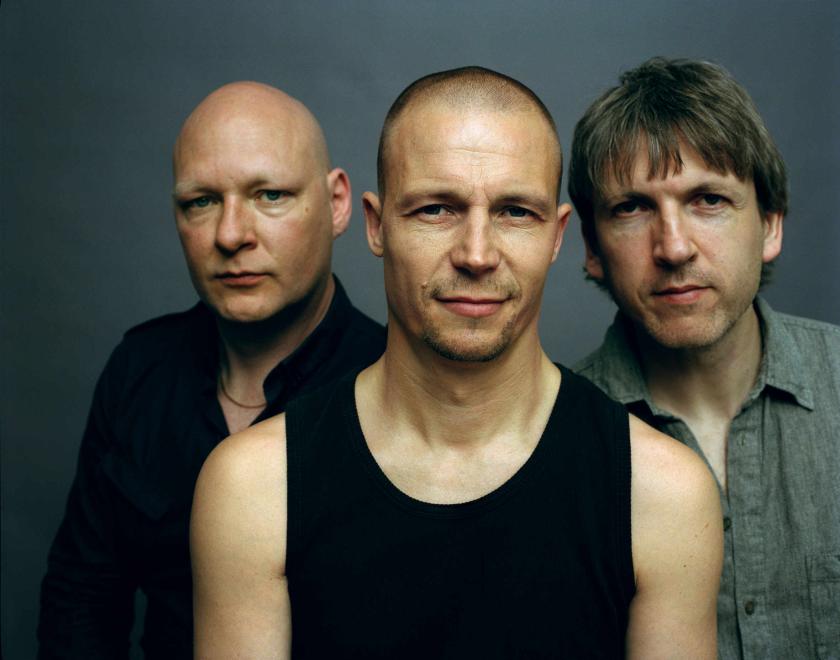“I guess it's jazz, but it's not what jazz was... if you have to call it something... " Esbjörn Svensson was the leader, pianist and main composer of e.s.t. and at the time of his death in a scuba-diving accident on 14 June, 2008, it would seem the band had the world at its feet.
Although the band were formed in Sweden in 1993, it wasn’t until From Gagarin’s Point of View in 1999 that they reached a large international audience, and a series of acclaimed albums such as 2006’s Tuesday Wonderland consolidated them as the archetypal modern jazz band. Partly responsible for shifting jazz's centre of gravity to Europe. they were the first European band to be on the cover of America's influential Downbeat magazine.
It’s the closest thing Europeans have had to Coltrane’s 'A Love Supreme'. It’s that good
The band used to say they were as influenced by Bartók and Radiohead as jazz classics, and this wide palette of colours was one reason they reached a younger audience than most jazzers. But it was to do with the air of integrity and an almost uncanny sense of communication between the trio. As Jamie Cullum put it, they were “three bodies, six arms, one head” with bassist Dan Berglund and drummer Magnus Öström making up the other sides of an equally weighted triangle.
The release of Leucocyte (dark washes of electronics, influenced by Nine Inch Nails) in 2008, only months after Svensson’s untimely death at the age of 44, seemed to be the band's final studio statement. But this week sees the release of 301 - named after the studio in which it was recorded in Sydney - which was recorded at the same time as Leucocyte.
Remarkably enough, the band went in for two days of recordings, improvising for nine hours at a stretch, and came out with two albums. 301 is far from a studio off-cuts afterthought, but on the contrary may be their greatest, most fully realised album. There is a sense of potential fulfilled, and unlike the unremitting Leucocyte, it has more a sense of lightness, of gratitude and a certain spiritual weight. It must be the closest thing Europeans have had to Coltrane’s A Love Supreme. It’s that good.
When I met with Dan Berglund and Magnus Öström a couple of weeks ago, Dan said, “We’ve had four years since the accident. We needed the time before we could look at this material – now there are good feelings and memories as well as the sad part.” While mixing it they “had the strong feeling that Esbjörn was there with us. It was great."
The slightly spooky thing was that they had some intimations of disaster. As Magnus recalls, “My wife Maria, who loves classical music, suddenly stopped listening to music completely. She said something bad was coming. And it did feel like something might happen, that’s all I can say.”
What happened afterwards is difficult for those who haven’t been in such a closely knit band to comprehend.
It’s like losing a family member. And as Dan says, “When you lose someone, you can bury yourself in work. We couldn’t do that.” The other problem was that most of their income was from live work, and a tale of lost houses and tough times followed. The accident also happened to be just before the economic meltdown in 2008.
But the two have bounced back. Dan regrouped with some pre-e.s.t. friends and formed the prog-rock influenced Tonbruket, who have released two highly regarded albums, while Magnus released his solo album Thread of Life last year.
By the last album, they were almost telepathic in their musical communication
Ask them about Esbjörn and they talk of his amazing drive, his fearlessness and his self-discipline. For the first couple of albums, tensions were caused by his control freakery, but after the Gagarin album he relaxed, seeming to accept and value what the others were doing. By the end, they were almost telepathic in their musical communication.
Magnus knew Esbjörn from when he was four years old, and they were playing music from an early age. Esbjörn's mother was a classical pianist which was a key part of his childhood. “When he was a baby he would be under the piano, listening to Chopin,” recalls Magnus. It’s something you can hear in 301’s opening track "Behind the Stars". The two were fascinated by astronomy as well.
As for Esbjörn's drive, at the age of 11, the two had a band together. When Magnus missed a rehearsal to play with his Scalectrix, he was kicked out of the band. “I was only allowed back in after a few months, because Esbjörn couldn’t find a better drummer.”
The new album features some wonderful, deep workouts, with little ego on show, like "Inner City, Inner Lights", which I played on The Arts Desk's first radio show. The final poignant track is called “The Childhood Dream”. As Magnus explains, “We had this dream that we would play in a group and make music and travel the world. And that all came true. But we miss him. He was a very good friend."
Listen to "A Childhood Dream", below:















Add comment